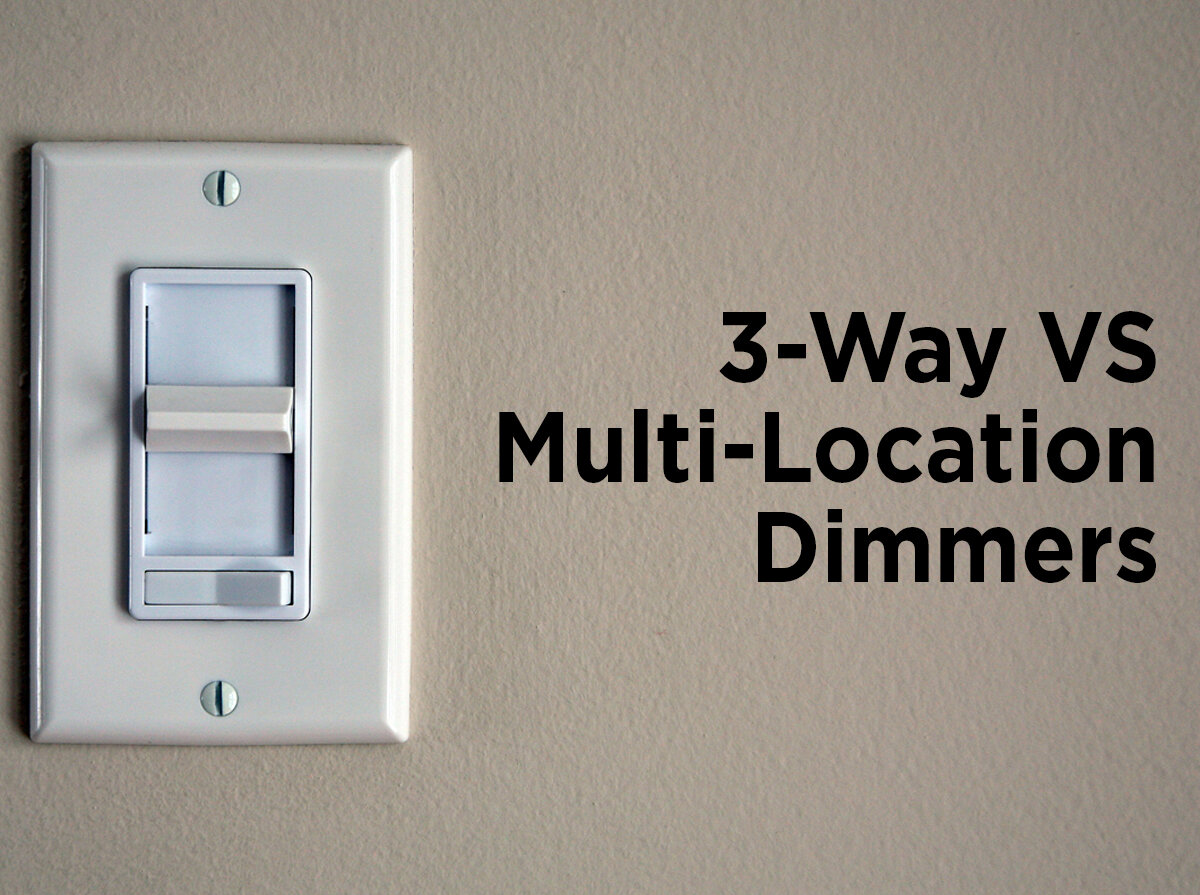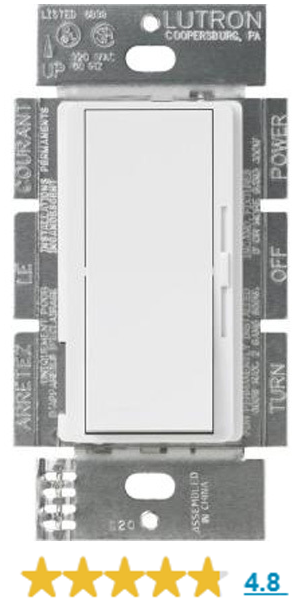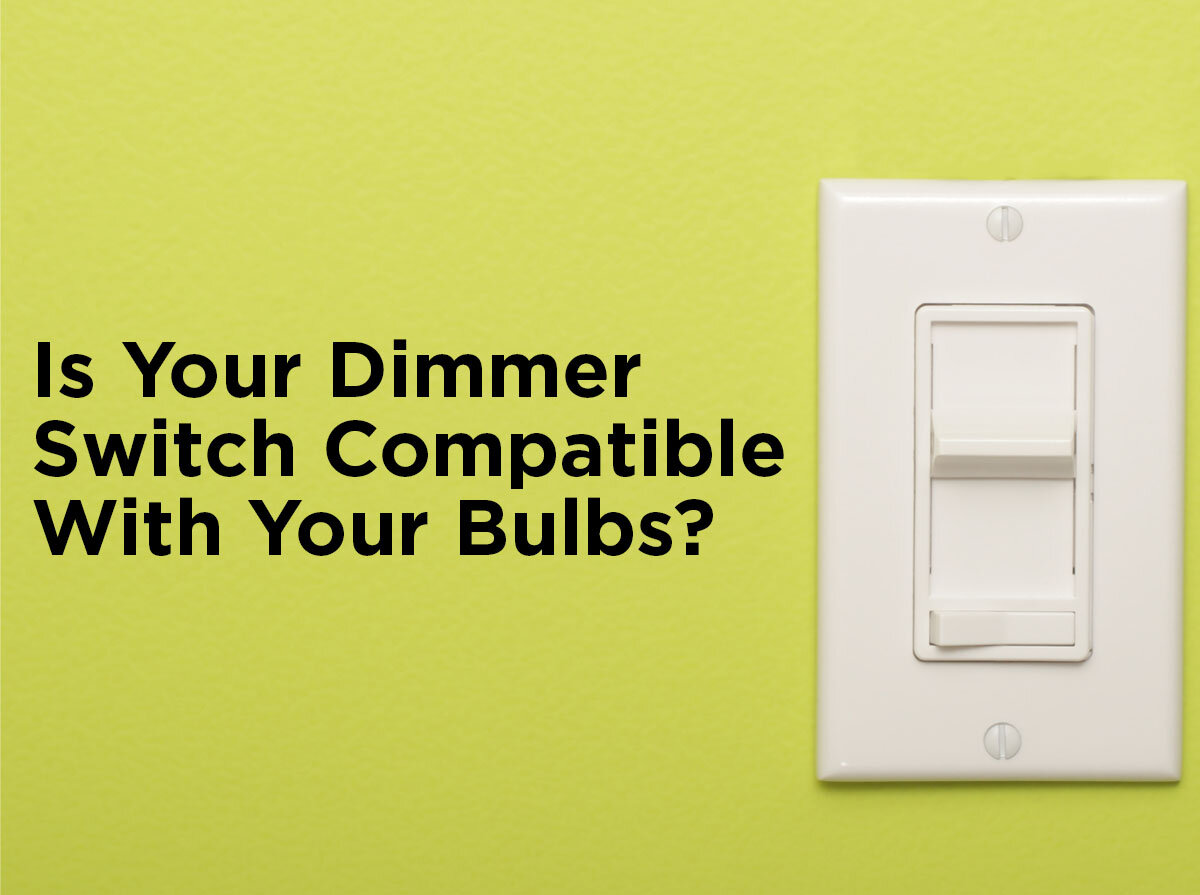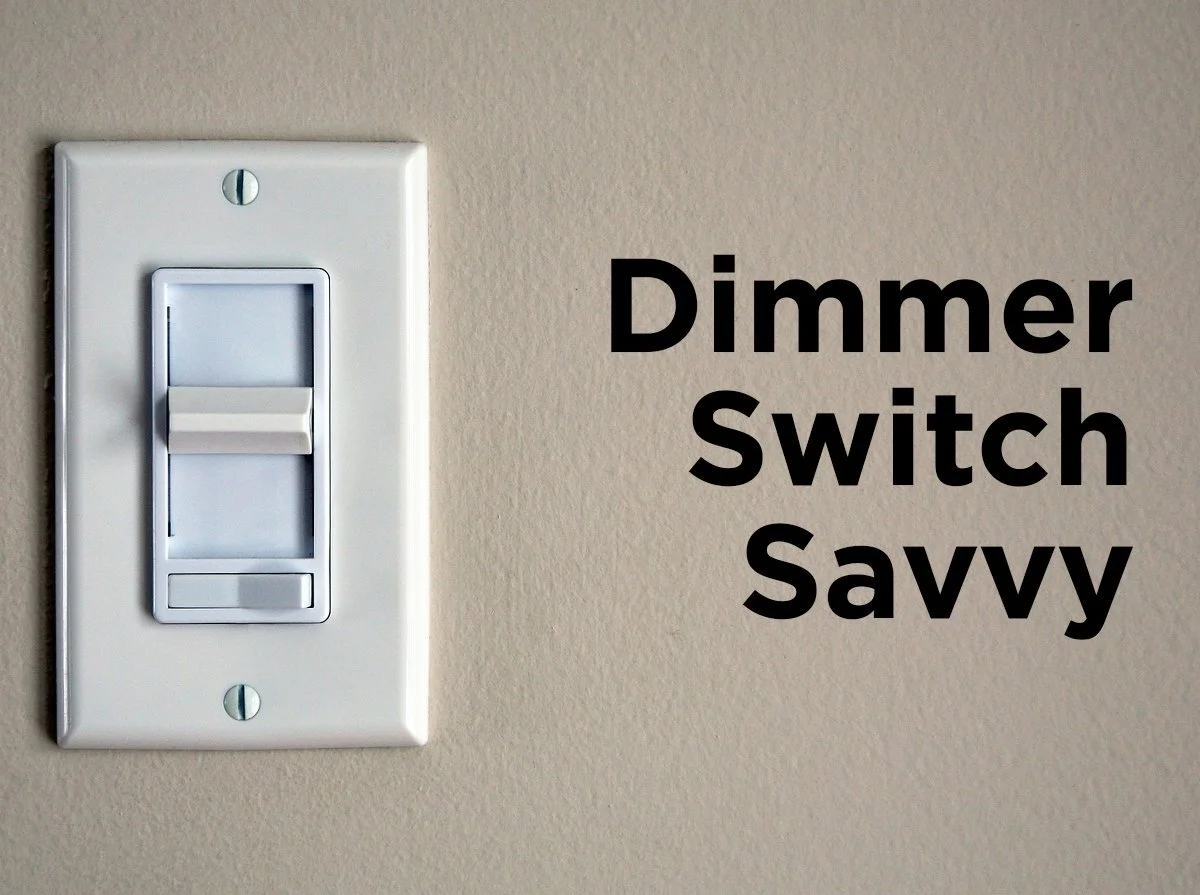3-Way Dimmer Switch vs. Multi-Location Dimmer Switch
Updated 10/11/23 by 1000Bulbs Staff
Are you looking to move beyond a simple light switch to control your lights? Consider using a dimmer switch to add features such as greater lighting control, energy savings, extended bulb life, enhanced ambiance and aesthetics, and an improved sleep environment.
Though they are small devices, dimmer switches can provide great flexibility in lighting your space. Dimmer switches help you adjust the brightness of your bulbs, enabling you to bring personalization and comfort to your space while enhancing its design and setting the mood.
The benefits aren't solely aesthetic, however. Dimming your lights can reduce electricity consumption, decreasing environmental impact. Not only does this change lead to savings on your energy bills, but it can also lead to savings on replacement bulbs.
Reducing the voltage supplied to bulbs reduces wear and tear and can extend their life. Learn more about how lighting controls can save you money here. Additionally, dimming the lights in the evening has potential health benefits, as bright lights, particularly those emitting blue light can interfere with your body's natural sleep-wake cycle.
What Kind of Dimmer Switches Are Available?
When installing dimmer switches, it's important to understand the various kinds on the market and their ideal uses. Be sure to brighten your knowledge about dimmers by learning about the availability and prices of different options for various voltage applications.
Today, however, we will focus on dimmer switches intended for use for fixtures controlled by more than one light switch. Aside from ensuring your dimmer is compatible with your bulbs, you need to find switches that work with the fixture as well as the number of light switches you have connected to that particular light fixture.
Common switches include single pole, 3-way, and multi-location options. Single pole dimmers are designed for lights controlled by one light switch. So, if your lights are controlled from more than one switch, a single pole dimmer just won't do.
Three-way dimmer switches offer one option in situations where more than one light switch controls the fixture, as is often the case with stairwell lighting. One dimmer switch can be turned to adjust the light level, while the other can be used to turn the light off or on.
Multi-location dimmers allow dimming control from more than one location, however, providing even more access to control and variability with your dimmer switches.
Whether you need to pick a 3-way dimmer switch or one compatible with multiple locations depends on how much control you want over light levels and from how many locations.
Three-Way Dimmer Switches
If you're replacing two 3-way light switches at the top and bottom of a stairwell or at either end of a hallway, you might think you need two 3-way dimmer switches, but you actually only need one. When using a 3-way dimmer switch, you should only have one dimmer on a single circuit. The other switches (you can have more than one) must be on-off switches only.
In this setup, the light level is controlled from a single location, whichever light switch you replace with the dimmer switch. The other light switches turn the lights off and on to the level set by the dimmer. For this reason, you don't want to dim the lights all the way down using the dimmer.
Instead, use the on-off toggle switch or push button that is part of the switch instead so that you don't render the other switches useless. Three-way dimmer switches do not allow for remotes, but there are options compatible with different types of light fixtures, including fluorescent, LED, and incandescent lights.
LED Three-Way Dimmer Switches
Dimming LED light bulbs requires different technology than fluorescent, incandescent, or halogen lights. If you already have your lights wired on a circuit with a dimmer, new LED lights may not be compatible with an older dimmer. When switching to LEDs, if buying from 1000Bulbs.com, you can check the dimmer compatibility PDF on each LED light bulb product page to make sure you won't run into any problems.
Using LED lights with an incompatible incandescent/halogen or fluorescent dimmer may cause humming, incomplete dimming, a shortened lifespan, or other performance problems.
Other Types of 3-Way Dimmer Switches
Electronic Low Voltage Dimmers
Electronic low-voltage dimmers are used for 12V and 24V light bulbs using an electronic low-voltage transformer to step down the voltage. Commonly used in residential settings, particularly with low-voltage halogen or LED lighting systems.
Their compatibility with low-voltage technologies improves dimming and reduces flickering, though they are not suitable for incandescent or fluorescent bulbs.
Magnetic Low Voltage Dimmers
Magnetic low-voltage dimmers are used for 12V and 24V light bulbs using a magnetic low-voltage transformer to step down the voltage. These dimmers are designed to provide smooth and precise dimming control to regulate the amount of current flowing through the transformer, controlling the voltage supplied to the low-voltage bulbs.
Commonly used in commercial settings, such as architectural lighting, art galleries, or retail spaces. They are typically compatible with halogen bulbs or certain types of incandescent bulbs, but not suitable for LED bulbs or fluorescent bulbs.
Multiple Load Dimmers
Multiple load dimmers are rated for use with more than one type of technology. For example, this type of dimmer switch may support several types of bulbs, including CFL, halogen, incandescent, LEDs, or a combination of those.
Multi-Location Dimmer Switches
Unlike 3-way dimmers, which cannot support multiple dimmers on the circuit, multi-location dimmer switches allow for dimming controls to function in more than one location. These can be paired with a compatible dimmer switch or non-dimming 3-way switches.
Like 3-way switches, these have on/off and dimming controls at the switch. They are also available in the same types of switches: incandescent, fluorescent, LED, low voltage, and multiple load.
A multi-location dimmer switch can even be integrated with smart-home systems and remotes. Any device on the circuit can access and control the dimming, such as a Pico remote paired with a Smart Bridge, depending on the setup. Some smart home systems even allow for lighting control through voice commands or smartphone apps, bringing even more convenience, adjustable control, and energy management to your fingertips.
With smart home security systems and emerging technologies that allow more integration of lighting control, expect options such as wireless smart dimmers and automated lighting control to become more prevalent and easy to access.
Installing New Switches
When you settle on the best dimmer for your application, you may seek help from a licensed electrician to install the switches. However, if you have experience working with fixtures and electrical wiring, you can install them yourself so long as you take proper safety precautions.
Follow these simple steps when installing switches such as the three-way Caséta wireless dimmers. For instructions specific to Lutron dimmers, check out this short video as well as this one which discusses how to install the Lutron Caséta in-wall dimmer kit.
Need More Help Finding the Right Dimmers or Light Switches?
Need help figuring out which dimmers are right for your installation?
Give us a call at 1-800-624-4488 to speak with a lighting expert about dimmer controls for your home or business.
Or shop 1000bulbs.com for a wide variety of options, including the right dimmer, light switch, and even matching wall plate for all of your lighting control needs.












